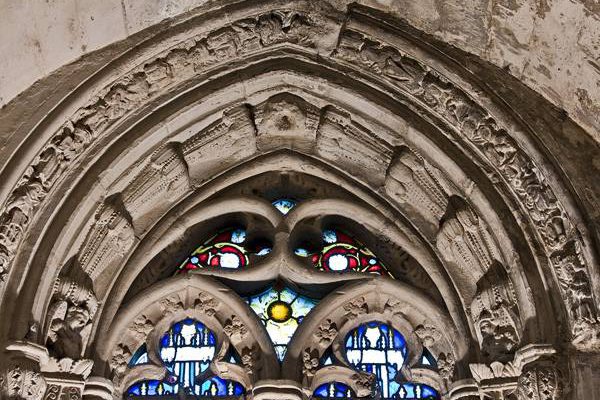Magic Carpet Ride
Ken W – Coril Holdings Ltd.
Having retired from full time employment with Coril Holdings at the end of 2014, and launching my new ‘life business’, 6IX PASSIONS, in January of 2015, I simply could not have imagined how spectacularly things would unfold to allow me to celebrate Canada’s 150th Birthday in 2017!!
Firstly, of my 6IX PASSIONS, one is to “Consult to businesses as a Senior Advisor.” and am delighted that Coril Holdings asked me to stay on in that capacity on a part time basis, thus allowing me to participate in contributing to this outstanding collection of Coril 150 Stories. Secondly, one of my other 6IX PASSIONS, “To explore my creative side.” led to the story that unfolds below.
As I was approaching retirement in 2014, and reflecting back on my time as a student in Electrical Engineering at The University of Alberta in the late 1960’s, I realized that one of the best times I had had in my life was singing, dancing and acting as a member of the cast of The U of A’s Faculty of Drama musical production of George Gershwin’s Girl Crazy. It was early fall of 1968, and through the sheer coincidence of beginning to date a girl who also happened to be auditioning for a part, I unknowingly crashed the auditions, got talked into trying my pipes on stage and ultimately won a significant role, having zero intention to do anything other than have coffee with my date. The subsequent experience of four months of rehearsals, and seven nights of performing with a full cast, chorus and orchestra was just incredible. Girl Crazy opened in the spring of 1969, my graduation year, in the fabulous Students Union Building’s brand new theatre at the U of A. The people I met were nearly all drama students and their passion and attitudes were fabulous. I loved it, and upon graduation that following June, left my exploration of the stage behind for a career in business.
Forty five years later, I began to wonder whether or not I had what it took to successfully audition to join a 50+ person, high performance group of rock music singers in Calgary, called Revv52. It took a Christmas gift from my daughter, Jessica and her partner, Wayne, in December of 2014 to open a huge door for me to embark on what has truly become a ‘magic carpet ride’. Jessica and Wayne gave me a gift certificate for a two hour vocal assessment session with a very accomplished vocal coach in Calgary, Brian Farrell www.brianfarrell.ca That led to an exciting and anxiety filled three months of work leading up to Revv52 auditions at the end of August 2015. I cannot thank my wife, Stephanie, and my sister, Clair Paulson, enough for their unwavering encouragement. Amazingly, I was ultimately successful (after nervously attending two Revv52 rehearsals in early September to see how my voice blended and balanced…or not…with the rest of the group) and from that moment on, I entered a whole big huge beautiful new world of many dimensions of learning, music, performing and building incredible relationships with people I would never have otherwise met.
Since that audition in August of 2015 (and mandatory auditions each August since, to ‘get back in’), I have had the phenomenal pleasure and experience of performing on stage in four uniquely different concerts in 2016 and 2017, each of them with four performances. Performing all rock and pop music, with specially written arrangements for Revv52 (for four part harmony), and accompanied by our Revv52 five member rock band. www.revv52.com Check out YouTube too, for great performances by Revv52.
We also performed in Carnegie Hall in New York City in March of 2016, something that just wasn’t even remotely on my radar screen. That was a fabulous experience.
Then, another door opened and in front of me was the biggest opportunity I have ever had. Some background first: in the fall of 2016, I was fortunate to meet a fellow by the name of Dave Pierce www.davepiercemusic.com at Ron Mannix’ and Diane Deacon’s wedding in San Diego. When Dave discovered that I was a member of Revv52, he told me that he wanted Revv52 to perform as one of the acts in the world famous Calgary Stampede Evening Grandstand Show in July of 2017, as part of The Calgary Stampede’s big Canada 150 Birthday Celebrations. Turns out that Dave, a Grammy award winning producer for his work producing the Opening Ceremonies for Vancouver’s 2010 Winter Olympics, was also the Producer of record for The Stampede Evening Grandstand Show too, a Las Vegas style multi-act outdoor variety extravaganza with audiences of up to 25,000 people each night for eleven nights!! Little did I know he was recruiting for acts for that 2017 Stampede Evening Show!
As a Calgary native, who had attended probably forty Calgary Stampedes in my life, to have the opportunity to perform on that big outdoor Grandstand Stage that I had watched as a spectator for years, and in my hometown, was beyond my imagination.
I introduced the opportunity to my fellow members of Revv52, the excitement built over the early part of 2017 as we met with Dave Pierce, his choreographers, stage managers and music directors and after 9 days of rehearsal in late June and early July, we opened on July 8th with Jann Arden, The Alberta Ballet, high wire acts, aerial specialists, Irish Dancers and many other artists. We performed Joni Mitchell’s award winning song, Both Sides Now with Treaty Seven dancers flanking us. Contrary to the experience of many vocalists performing in outdoor venues, who are usually required to pre-record their vocals and then sing un-amplified on stage with the sound system playing their recorded voices, Revv52 sang into live microphones each night simply because Dave Pierce and his crew were so impressed during rehearsal with the high quality of our voices.
And again, through the magic of music and the intensity of nine rehearsals and eleven evening shows, we established new relationships with many, many great people, both performing artists and back stage professionals. Nothing prepared any of us for the gut thrill of singing O Canada with all 380 artists stretched across that stage, performing the finale each night with a ground shaking display of fireworks all around us and 25,000 people standing in their seats singing their hearts out with us.
Ken W – Coril Holdings Ltd.






